Firefly Isopods For Sale
$34.99 – $199.99
WE HAVE FIREFLY ISOPODS FOR SALE. HERE ARE SOME HIGHLIGHTS:
- Cubaris Murina Sp. Firefly
- Captive Bred
- Mixed Sizes: Nymphs To Adults
- Adults Grow To About 12mm
- Excellent For Cleaners And Feeders
Firefly Isopods
Firefly isopods, scientifically known as Venezillo parvus, belong to the order Isopoda within the crustacean class Malacostraca. These fascinating creatures derive their name from their unique bioluminescent properties, which resemble the ethereal glow of fireflies. Typically found in coastal regions, firefly isopods thrive in damp environments such as under rocks, leaf litter, and decaying wood. Their ability to adapt to various habitats makes them a subject of interest for both scientists and nature enthusiasts.
One of the most captivating characteristics of firefly isopods is their bioluminescence. This natural light emission is primarily used for attracting mates and deterring predators. The light-producing organs, known as photophores, are located on the underside of their bodies. The bioluminescence of firefly isopods is not only a visual spectacle but also a survival mechanism that has evolved over millions of years.
In terms of physical appearance, firefly isopods are relatively small, usually measuring between 1 to 2 centimeters in length. They have a segmented, oval-shaped body covered by a hard exoskeleton, which provides protection from predators and environmental hazards. Their coloration ranges from dark brown to black, which helps them blend into their natural surroundings. Additionally, these isopods possess seven pairs of legs, aiding in their mobility across various terrains.
Firefly isopods play a crucial role in their ecosystems by aiding in the decomposition process. They feed on decaying organic matter, breaking it down into simpler substances that enrich the soil. This process not only helps in nutrient cycling but also maintains the balance of the ecosystem. By understanding the role and characteristics of firefly isopods, we can appreciate the intricate connections within our natural world.
Anatomy and Physical Characteristics
Firefly isopods, scientifically known as Cypridinas or Vargula, are small crustaceans that exhibit remarkable physical traits. Typically, these creatures measure between 3 to 6 millimeters in length, making them quite minute in comparison to other marine organisms. Despite their size, firefly isopods are easily distinguishable due to their distinct morphology and vibrant bioluminescence.
The coloration of firefly isopods generally ranges from translucent to light brown, which aids in camouflage against predators. However, their most notable feature is their ability to emit light. This bioluminescence is produced by specialized light-emitting organs called photophores. These organs contain luciferin, a light-emitting pigment, and luciferase, an enzyme that catalyzes the light-producing reaction.
Bioluminescence serves multiple evolutionary advantages for firefly isopods. Primarily, it is used as a defense mechanism to deter predators. When threatened, the isopods release a burst of light, startling and confusing potential threats, allowing the isopod to escape. Additionally, bioluminescence aids in communication during mating, as these light signals can attract potential mates. The ability to produce light also plays a role in intra-species communication, helping individuals coordinate activities in the dark marine environment.
Moreover, the bioluminescent capabilities of firefly isopods have intrigued scientists for years. Research into their light production mechanisms has potential applications in fields such as medical imaging, where bioluminescent markers can aid in the visualization of biological processes. Thus, the physical characteristics of firefly isopods, particularly their bioluminescence, not only contribute to their survival but also offer valuable insights for scientific advancements.
Habitat and Distribution
Firefly isopods, scientifically known as Cylisticus convexus, inhabit a variety of environments across the globe. These fascinating creatures are predominantly found in temperate regions, where they thrive in moist, shaded areas. Typical habitats include leaf litter, under rocks, and within decaying wood, environments that provide the damp conditions and organic matter necessary for their survival. They are particularly prevalent in forested areas, where the dense canopy and rich undergrowth create an ideal microhabitat.
Geographically, firefly isopods are distributed widely across North America, Europe, and parts of Asia. Their ability to adapt to different ecological conditions has allowed them to colonize various locales, from the woodlands of North America to the temperate forests of Europe. In these regions, they play a crucial role in the decomposition process, breaking down organic material and contributing to nutrient cycling in the ecosystem.
Adaptability is a key characteristic of firefly isopods. While they prefer humid environments, they can tolerate a range of moisture levels, allowing them to survive in less ideal conditions. This adaptability extends to their diet as well; although they primarily consume decaying plant matter, they can also feed on fungi, algae, and even small invertebrates when necessary. Their ability to thrive in diverse habitats and conditions underscores their ecological significance and resilience.
In urban settings, firefly isopods can often be found in gardens, beneath logs, and in other damp, sheltered spots. Their presence in these areas highlights their versatility and ability to coexist with human activities. Understanding the habitat and distribution of firefly isopods not only sheds light on their ecological importance but also emphasizes the need to preserve the environments that support their diverse communities.
Diet and Feeding Behavior
Firefly isopods exhibit fascinating dietary habits that contribute significantly to their role within their ecosystems. Primarily, firefly isopods are detritivores, meaning they consume decomposing organic material. This includes leaf litter, decaying plant matter, and dead animals. By breaking down these materials, firefly isopods play a crucial role in nutrient cycling and soil formation, effectively aiding in the decomposition process and enriching the soil with vital nutrients.
The feeding behavior of firefly isopods is characterized by their nocturnal activity. These isopods are predominantly active at night, which reduces the risk of predation and allows them to forage more safely. Their sensory adaptations, such as well-developed antennae, aid them in locating food sources in the dark. Additionally, firefly isopods have specialized mouthparts designed for chewing and processing their fibrous diet, allowing them to efficiently break down tough plant material.
Interactions with other species also play a significant role in the feeding dynamics of firefly isopods. For instance, they often share their habitat with other detritivores, and this cohabitation can lead to both competitive and symbiotic relationships. In some cases, firefly isopods may benefit from the presence of other species that help break down larger pieces of organic matter into smaller, more manageable fragments. Conversely, competition for limited food resources can sometimes lead to shifts in feeding strategies or habitat preferences.
Unique feeding behaviors have also been observed in firefly isopods. Some species exhibit coprophagy, the consumption of fecal matter, which can provide additional nutrients and aid in the digestion of certain materials. This behavior highlights the adaptability of firefly isopods in maximizing their nutrient intake from available resources. Moreover, their detritivorous diet underscores their importance in maintaining the health and balance of their ecosystems by contributing to decomposition and nutrient recycling processes.
Reproduction and Life Cycle
Firefly isopods exhibit unique reproductive methods and a fascinating life cycle that contribute significantly to their survival and proliferation. The reproductive process of these intriguing crustaceans begins with a complex mating behavior. During the mating season, male firefly isopods engage in a series of courtship rituals to attract females. These behaviors often include displays of luminescence, which serve to mesmerize potential mates and ward off competitors.
Once a pair has successfully mated, the female firefly isopod proceeds to lay her eggs in a secure and moist environment. Typically, the eggs are deposited in small clusters, often hidden under decaying organic matter or within the crevices of their habitat. The incubation period for these eggs varies, but it generally lasts several weeks, during which the embryos develop and prepare for hatching.
The developmental stages of firefly isopods are marked by a series of molts, during which they shed their exoskeleton to accommodate their growing bodies. The newly hatched juveniles, known as mancae, resemble miniature versions of the adults but lack fully developed appendages and reproductive organs. As they progress through successive molts, these juvenile firefly isopods gradually acquire the characteristics and capabilities of mature individuals.
Firefly isopods have a relatively short lifespan, typically ranging from one to two years, depending on environmental conditions and predation pressures. Despite this brevity, their reproductive strategies ensure the continuity of their populations. Some species of firefly isopods exhibit fascinating reproductive adaptations, such as parthenogenesis, where females can produce offspring without mating. This ability allows for rapid population growth, especially in isolated or low-density habitats.
Overall, the reproductive methods and life cycle of firefly isopods are a testament to their adaptability and resilience. Their intricate mating behaviors, strategic egg-laying practices, and progressive developmental stages illustrate the complexity and marvel of these small but remarkable creatures.
Ecological Importance
Firefly isopods play a significant role in their ecosystems, contributing to both nutrient cycling and ecological balance. These fascinating creatures are integral to decomposing organic matter, particularly plant detritus. By breaking down dead plant material, firefly isopods help recycle nutrients back into the soil, fostering a healthier environment for plant growth. This process is crucial for maintaining soil fertility and promoting the overall health of the ecosystem.
Beyond their role in decomposition, firefly isopods also interact with a variety of other species, creating a web of ecological relationships. They serve as a food source for numerous predators, including birds, amphibians, and small mammals. This positions them as a vital link in the food chain, ensuring energy transfer between trophic levels. Their presence and abundance can significantly influence the population dynamics of their predators, thereby maintaining the balance within the ecosystem.
Furthermore, firefly isopods contribute to the aeration and mixing of soil through their burrowing activities. This behavior helps enhance soil structure and promote the infiltration of water and air, which are critical for plant root systems. By facilitating these processes, firefly isopods indirectly support plant health and productivity, which, in turn, sustains herbivores and higher trophic levels within the ecosystem.
The ecological significance of firefly isopods extends to their role in disease regulation. By decomposing organic matter, they reduce the accumulation of waste that could otherwise harbor pathogens and pests. This natural waste management function helps prevent the spread of diseases within the ecosystem, contributing to the overall stability and health of the habitat.
In essence, firefly isopods are unsung heroes in their environments. Their multifaceted roles in nutrient cycling, soil maintenance, and food web dynamics underscore their importance in maintaining ecological balance. Understanding and appreciating the contributions of these small yet impactful organisms can lead to better conservation efforts and a deeper appreciation of the intricate relationships that sustain our natural world.
Conservation Status
Firefly isopods, like many other unique species, are facing various threats that jeopardize their survival. One of the primary dangers to these bioluminescent crustaceans is habitat destruction. Coastal development, pollution, and climate change are severely impacting their natural habitats, leading to a decline in their population. As their habitats diminish, firefly isopods are forced to adapt to new, often unsuitable environments, which can result in decreased survival rates.
Another significant threat to firefly isopods is the increase in ocean acidity. As the ocean absorbs more carbon dioxide from the atmosphere, it becomes more acidic, which can have detrimental effects on these delicate creatures. Acidification can interfere with their ability to produce light, an essential feature for their survival and reproduction. Additionally, it can weaken their exoskeletons, making them more vulnerable to predators.
Conservation efforts are crucial to protect firefly isopods from these threats. Organizations and researchers are working tirelessly to monitor their populations and study their habitats to better understand the conditions they need to thrive. Conservation measures include the establishment of marine protected areas, where human activities are restricted to minimize habitat disruption. These protected zones provide a safe haven for firefly isopods and other marine life, allowing them to recover and maintain healthy populations.
Public awareness and involvement are also vital components of conservation efforts. Individuals can contribute by supporting policies and initiatives aimed at reducing pollution and protecting marine environments. Simple actions, such as reducing plastic use, properly disposing of waste, and advocating for sustainable coastal development, can have a significant impact on preserving the habitats of firefly isopods.
In conclusion, the conservation of firefly isopods is a multifaceted endeavor that requires cooperation between scientists, policymakers, and the public. By addressing the threats they face and taking proactive measures to protect their habitats, we can ensure the survival of these fascinating creatures for future generations to enjoy.
Fun Facts and Myths
Firefly isopods, often found in marine environments, are a source of fascination due to their bioluminescent properties and unique behaviors. One captivating fact about these extraordinary creatures is their ability to produce light through a chemical reaction involving luciferin and luciferase. This bioluminescence is not only mesmerizing but also serves practical purposes such as attracting mates and deterring predators.
Interestingly, firefly isopods exhibit a remarkable degree of sexual dimorphism. In many species, males are significantly smaller than females, and this size discrepancy plays a crucial role in their reproductive strategies. Females often possess specialized organs for nurturing their offspring, ensuring the young have a higher chance of survival in their early stages of development.
One common myth about firefly isopods is that they can only be found in tropical waters. While it’s true that many species thrive in warmer climates, these adaptable organisms can be found in a variety of marine environments, including temperate and even colder regions. Their adaptability underscores their evolutionary success and resilience in diverse ecosystems.
Another myth is that firefly isopods are harmful to humans. On the contrary, these creatures are generally harmless and pose no threat. Their luminescence has even been studied for potential applications in biotechnology and medical research, showcasing their value beyond their natural habitat.
Moreover, firefly isopods play a vital role in the marine food web. As scavengers, they contribute to the breakdown of organic matter, aiding in nutrient cycling and supporting the health of their ecosystems. Their presence indicates a balanced and functioning environment, highlighting their ecological importance.
In essence, firefly isopods are more than just luminous wonders; they are integral components of their ecosystems with intriguing behaviors and characteristics. By debunking myths and sharing these fun facts, we hope to foster a greater appreciation for these remarkable organisms and the roles they play in the natural world.

| Options | Single, 6 ct. |
|---|
Be the first to review “Firefly Isopods For Sale” Cancel reply
Related products
Isopods
Isopods
Isopods
Isopods

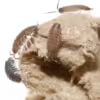



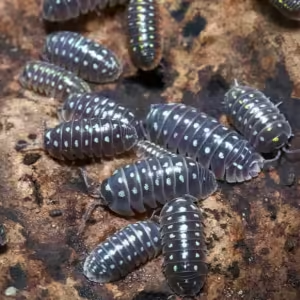

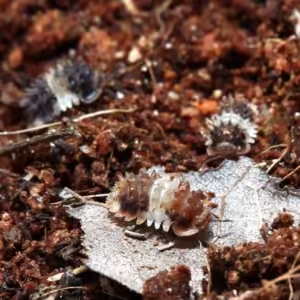
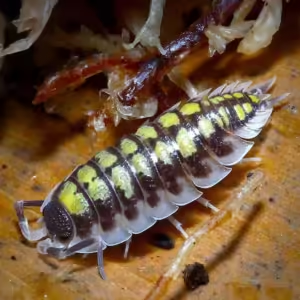

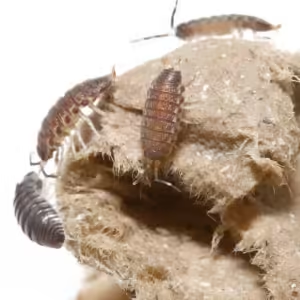

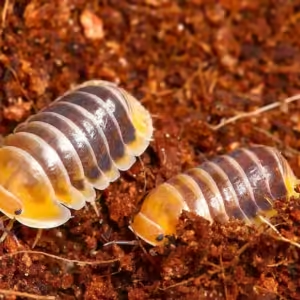
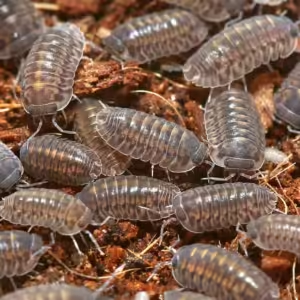



Reviews
There are no reviews yet.